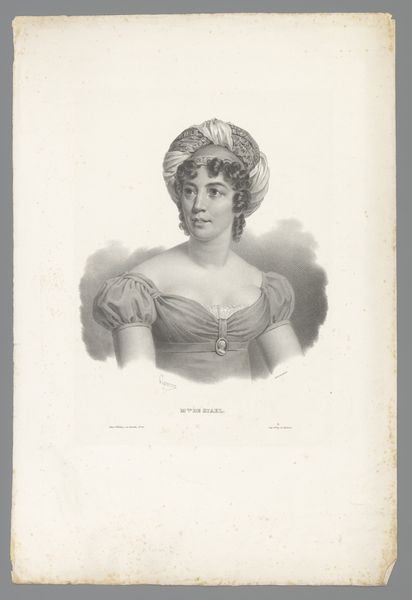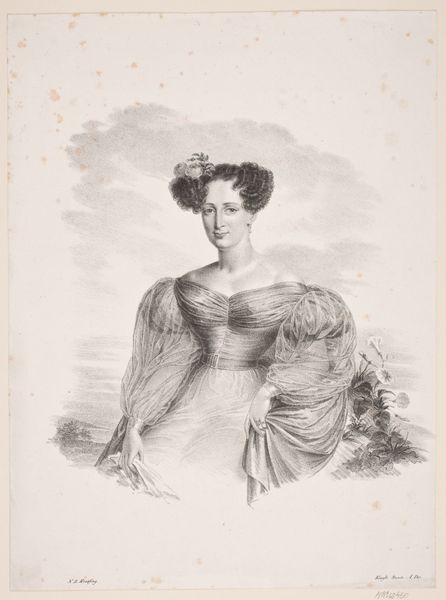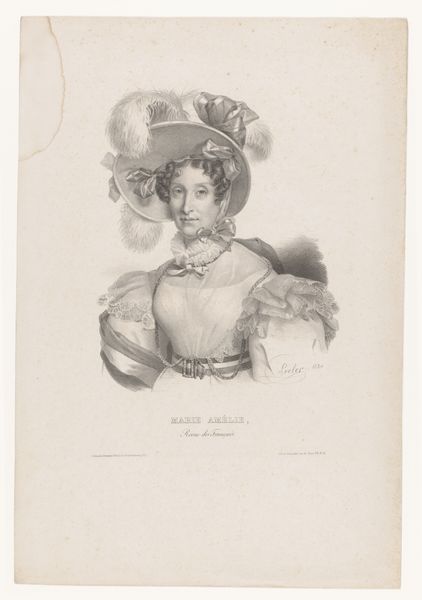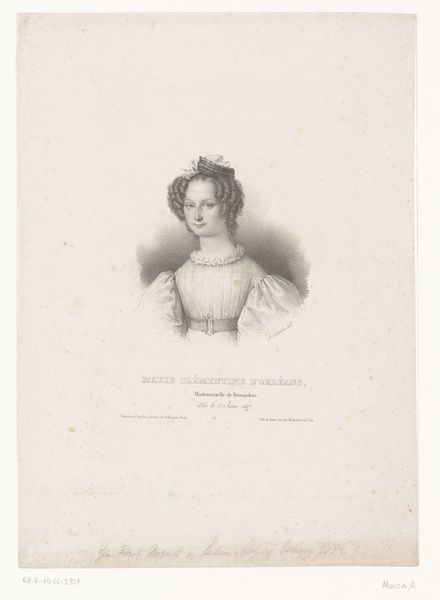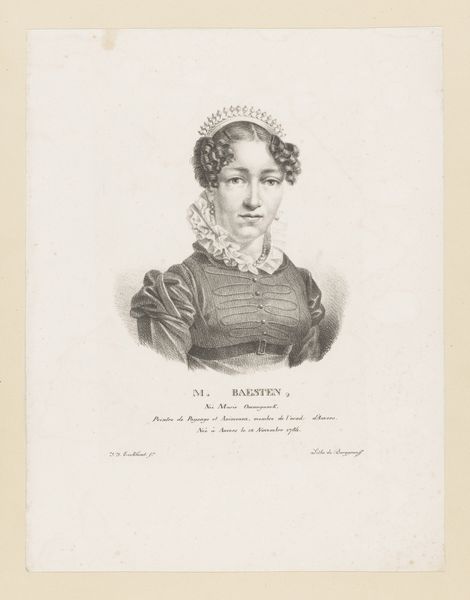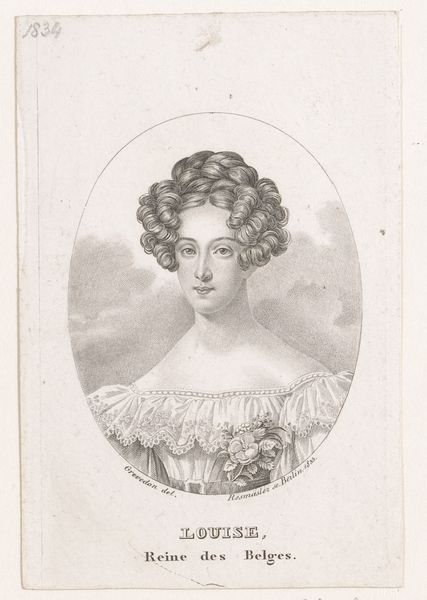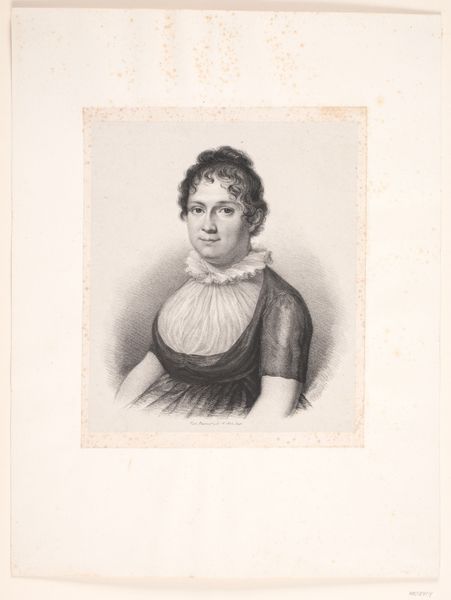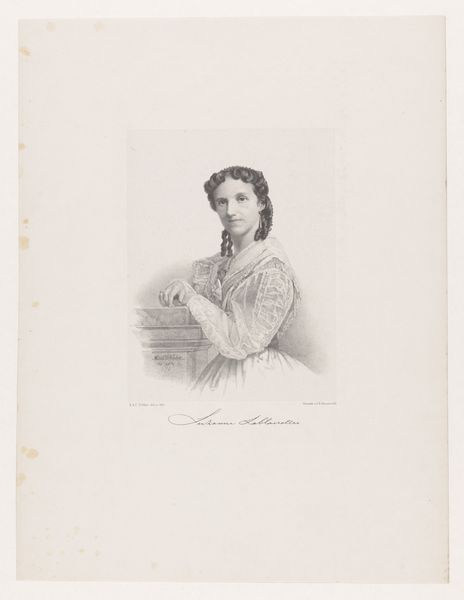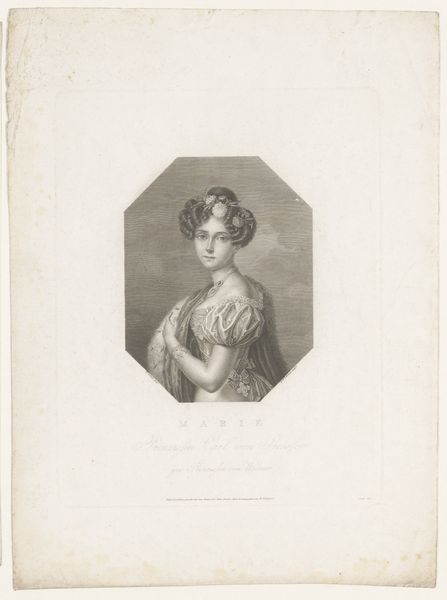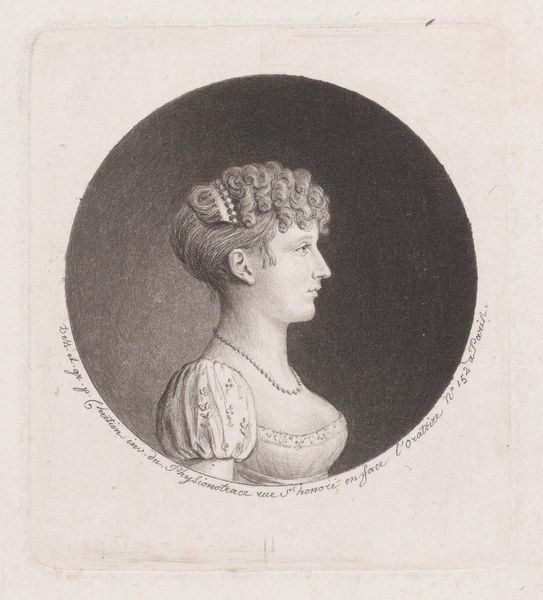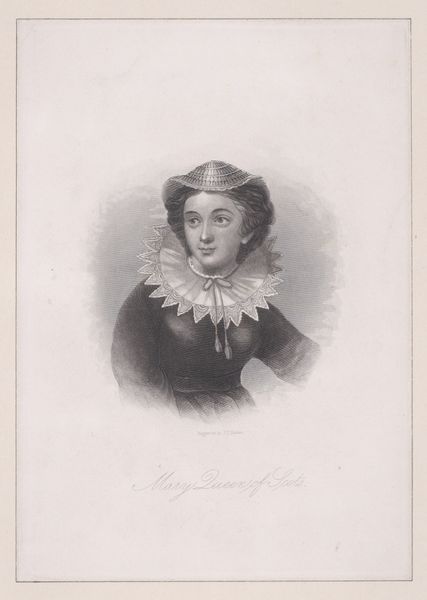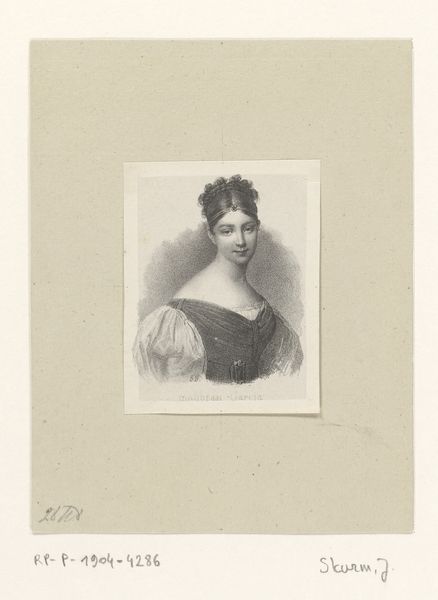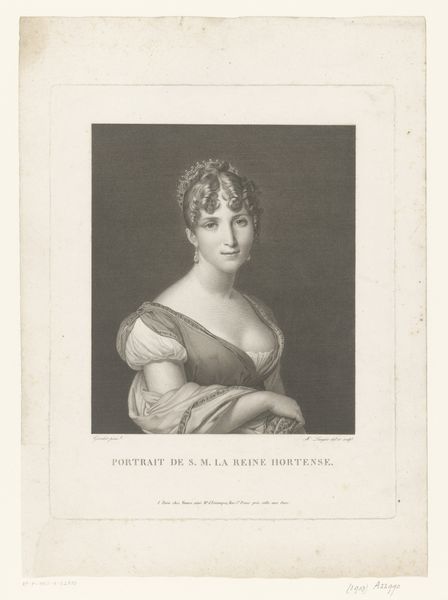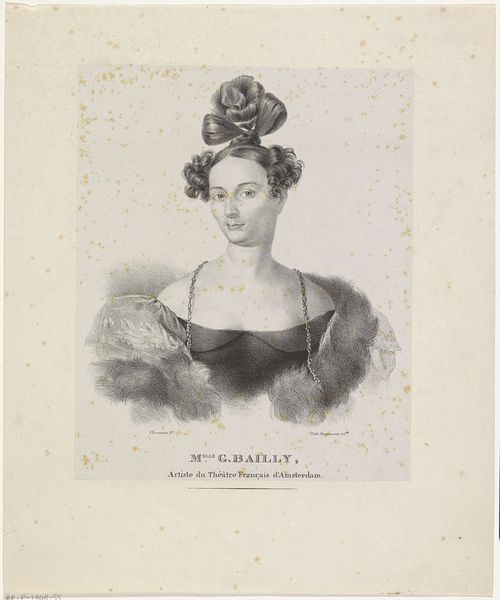
Dimensions: height 240 mm, width 160 mm
Copyright: Rijks Museum: Open Domain
Editor: Here we have a print, “Portrait of Angelica Catalani,” made sometime between 1846 and 1876 by Carel Christiaan Antony Last. It's quite delicate, a romantic portrayal of a woman adorned with pearls and flowers. As a print, it was likely meant to be reproduced and widely distributed. What does this suggest about its purpose? Curator: It’s important to consider the labor and materials involved in creating such an image, even one intended for mass consumption. The engraving process itself required skill and time, pointing to the professionalization of printmaking and its role in disseminating images of prominent figures. How do you think the mass production of this portrait impacted Catalani's image and reputation? Editor: Well, I suppose it made her accessible to a wider audience. Perhaps this accessibility challenged the boundaries of celebrity culture even then? Curator: Precisely. Think about the materiality of printmaking. Unlike a unique painted portrait accessible only to a wealthy patron, prints utilize relatively inexpensive materials like paper and ink, expanding viewership and transforming Catalani into a commodity. Does the work’s formal, almost academic, style diminish this aspect? Editor: Not entirely. The romanticized style clashes a bit with this idea of mass production and commodification. Maybe it reveals a tension between artistic aspiration and the demands of the market. Curator: An excellent observation! It’s this tension – between artistic skill, mass production, and the representation of social status – that truly brings the work to life. Understanding these elements allows us to appreciate its significance within the broader cultural landscape of the time. Editor: I hadn't thought about the materials and the making of the piece as affecting its reception, it offers an additional layer of context that shifts how one experiences it! Curator: Absolutely, considering these factors transforms how we perceive and interact with this historical work!
Comments
No comments
Be the first to comment and join the conversation on the ultimate creative platform.
